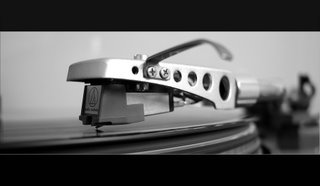 Vinyl was initially discovered by was discovered by French physicist Henri Victor Regnault, and it's first practical production process designed by Fritz Klatte (pictured) in 1912. He discovered that the reaction between acetylene and acetic acid could be catalyzed to produced vinyl chloride. This predated it's use in media by such a long period of time that his patent expired in 1925. One year later it was rediscovered by Waldo Semon, who recognized its potential and patented it for the second time. His employers at B.F Goodrich used it for insulation, raincoats, shower curtains and gaskets. More here.
Vinyl was initially discovered by was discovered by French physicist Henri Victor Regnault, and it's first practical production process designed by Fritz Klatte (pictured) in 1912. He discovered that the reaction between acetylene and acetic acid could be catalyzed to produced vinyl chloride. This predated it's use in media by such a long period of time that his patent expired in 1925. One year later it was rediscovered by Waldo Semon, who recognized its potential and patented it for the second time. His employers at B.F Goodrich used it for insulation, raincoats, shower curtains and gaskets. More here. 
After it's benefits were demonstrated, (durability, flexibility and longevity) it was adopted as the new material for record production. On June 26th 1948 in New York CBS called a press conference to announce the introduction of the LP or long player. 12 inches wide, turning at 33 1/3 and using the innovation of vinyl had resulted in a record that could hold up to 30 minutes of music per side! It was called "microgroove" technology.
RCA retaliated by bringing their own vinyl medium to the market, a 7-inch 45 rpm micro-groove vinyl single and compatible turn table.
By 1954 45 rpm singles were out on vinyl making available a higher fidelity single and then about 8 years later RCA debuted the stereo LP, an innovation that would have been impossible on shellac.




No comments:
Post a Comment